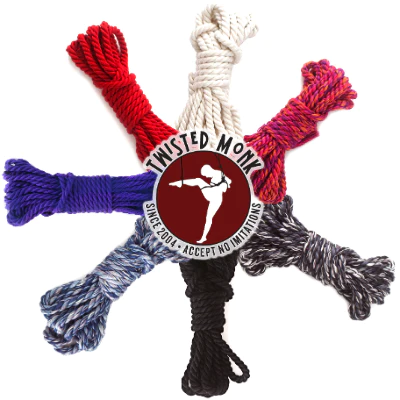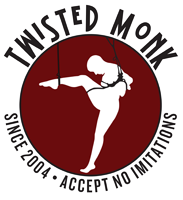How to Have Better Kink Scenes: Autism in BDSM
By Adora Horrible AKA Shira Behal, LCPC, AT
Why are there so many Autistic people in the kink community? In short, it plays to our strengths.
BDSM provides STRENGTHS BASED connection. In my work as a therapist, and in my BDSM scene design, I use awareness of challenges and a focus on strengths. For example, the Autistic ability to experience empathy by literally feeling along with the other person, or to learn everything about a topic, both play well in BDSM. Let’s look at some other common strengths and challenges and how to turn them into AMAZING scenes.
CLEAR COMMUNICATION.
Because BDSM taps into strong neurochemicals and mimics trauma, it’s important to have rules and negotiations to keep it as safe and controlled as possible. Likely, if you’re on Twisted Monk, this is old news to you.
For someone with Autism, eliminating the guesswork of social expectations might feel like heaven. BDSM also encourages speaking up about needs, instead of minimizing them, as society at large often does.
Up your negotiation game with this written form
Written assignments are a common workplace/academic accommodation for Autistics that also work well in a BDSM context .This written negotiation resource can help start the conversation, make sure both parties are on the same page, and keep track through the scene.
BESPOKE SENSORY EXPERIENCE
People on the Autism Spectrum are often incredibly in tune with their sensory experience. This can be powerful, and sometimes overwhelming. Autistics often get invalidating messages around their sensory experience like “it’s not that bad, everyone feels that way sometimes.” Or the opposites like, “don’t you feel that? Doesn’t that hurt?” So let BDSM scenes be the place where there is no invalidation, only belief and trust that an autistic feels and needs what they say they do. That alone can be a life changing experience.
Here are some common considerations, but always ask your partner what their needs are, as everyone on the spectrum is a little different.
Sounds can cause full body responses. A smell can be heaven or hell. People on the spectrum often have trouble tolerating light touches, but a firm hug or touch or rhythmic impactscan be excellent. Weighted objects like blankets or vests can be calming, so having a partner’s weight on you can feel similarly good. Itchy tags or clothing (Or rope!) can be unbearable, but a soft texture can bring euphoria.
For a top, it can be wonderful to have full control of the sensory experience, directing every aspect. Also, using heightened sensory awareness as a top can help you tune in to your bottom’s experience.
Rope often holds a special joy for an autistic* It can feel like a hug tied around you, or an incredible stimming, calming, or exciting sensation while tying. The use of rope as a sensory communication tool between partners becomes its own language.
Whether you are a top OR a bottom, I suggest fine tuning your sensory experience. Checkout this sample pack of rope to see what feels good to you and/or your partner.
I was surprised to find I love the bamboo for its balance of softness with resistance/strength, plus great color and add on choices. Feeling sample textures in hand is more informative, and downright delightful. In this and other ways, be intentional and even indulgent with the sensory experience you create.
Conversely, Autistic people use “low sensory time” as a way to de-stress and reduce overwhelm. So a blindfold, earplugs, and restricted movement can feel like blisssssss. If you encounter trouble because of overwhelm, or if an Autistic person has gone nonverbal, offering/taking time with low sensory input and low to no demands is a good way to recover energy and function.
Inconsistency of sensory responses is a hallmark for Autism. Remember that even with pre-negotiation, you’re looking for *enthusiastic* consent, which can always be revoked at any time during a scene. This is even more true for someone with autism, where the experience varies so greatly moment to moment or day to day. Something can feel good one day and terrible the next!
This can be really hard on partners who want to “learn” each other, but it’s not a “rejection.” It’s like how anyone’s tastes get affected by stress level, sleep, etc…The differences are just more pronounced for those on the spectrum. So, never assume the same things as last time will be good. Check in and create something unique for every scene. Also, craft alternatives when one way to reach your scene goal doesn’t pan out. E.g. on a no hugging day, ask about intimacy through high fives or boot licking. Kink and D/s offer very creative options.
Planning ahead is important too. Offering multiple options allows for adjustment, so a good time can be had regardless of the day’s challenges . Having a plan, knowing what’s next, and giving a warning before transitions can provide a lower stress scene.
A RESPITE FROM MASKING
Masking is an adaptive survival skill to avoid being ostracized. It goes on for so long and starts so young that it’s not a deception. It’s automatic protection, and may be indiscernible to someone from their actual identity. However, it can also make for excellent role play, since much of life has been stepping into a character. Masking can include having a “social persona,” limiting contact when not feeling the best, or constantly monitoring facial expressions and body language of others to notice patterns, mirror behavior, or know when to speak or give eye contact. When masking becomes taxing, it can leave the person feeling unable to be themselves, like they are behind a wall, unable to genuinely connect.
BDSM is an opportunity to get authentic connection. From negotiation on, it gives “permission” to be real, to not smile, to show pain or struggle. The connection grows with every rise and fall of breath, each utterance of, “yes, like that… do more… say more….” , bringing people to notice their bodies and express their authentic selves. The intensity of the interaction physically, including pleasure or pain, creates neurochemicals that break down inhibitions. Like being intoxicated without taking a sip. In vino veritas- but without the vino. In vitalis veritas.
While masking is a life skill that should not be tossed away or corrected, adding places where masking is not needed may bring a lot of relief. It can also bring a deeper connection with your partner and yourself. Be patient, it can take practice and time.
For every aspect of neurodivergence that causes struggle, there is a corresponding strength, or opportunity. As in most situations, getting rid of shame, planning coping strategies, and open communication are generally the key.
Happy kinking!
* Person-first vs. identity-first language:
I use identity-first language. I was raised by Jewish parents, and I use Autistic the same way I would use Jewish, as a part of my identity and something that affects my worldview. I would never say, “a person with Judaism.” I also feel it acknowledges both the struggle and strengths as well as the unique perspective Autism can bring.
I suggest using whatever someone prefers with them. This article discusses both sides:
Identity-First Language - Autistic Self Advocacy Network
Also in News

Exotic Bamboo Rope Review by Pete Riggs of Ropeconnections.com
Pete Riggs of Ropeconnections.com recently did a very through and in depth review of our exotic bamboo ropes, including washing! Check it out, along with tons of other great rope content and tutorials!


